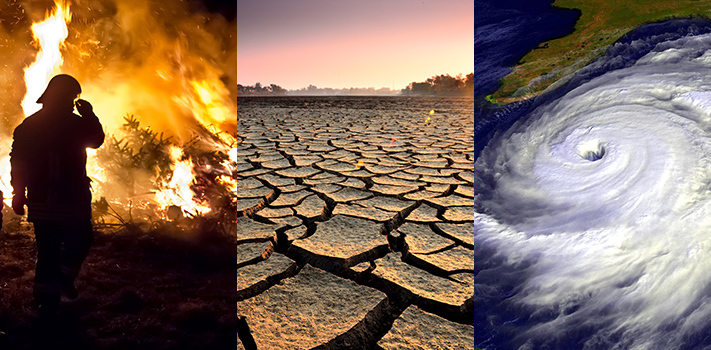Currently, the biggest contributor to anthropogenic climate change is the expansion of the greenhouse effect. This expansion is being driven primarily by the buildup of carbon dioxide in the atmosphere. Although carbon dioxide is less abundant in the atmosphere than water vapor (which is the most abundant greenhouse gas), it stands out in many ways: it has a higher radiative forcing than water vapor, a long life cycle, and it is by far the most common greenhouse gas that results from human activity. Human activity does not appear to be going downhill; instead, it is only increasing as the population also increases. This means that not only will carbon dioxide continue to be thrown into the atmosphere, but it will also be thrown in greater amounts.
There are many ways in which carbon dioxide is put into the atmosphere by humans. Common examples include deforestation, the burning of fossil fuels, car exhaust, and much more.
Deforestation occurs regularly. As the population increases so do the demands for housing and changing of lands. Trees are cut down to meet these demands. Trees release carbon dioxide they had absorbed prior to their cutting down when they are cut down. Diminishing the number of trees also lowers the amount of carbon dioxide absorbed by trees, therefore allowing more carbon dioxide to stay in the atmosphere. Essentially, when trees are cut down, the carbon cycle is being disturbed.
So what is the buildup of carbon dioxide leading to? As stated before, it is leading to an expansion of the greenhouse effect, and the expansion of the greenhouse effect is leading to climate change. Climate change's effects can be seen everywhere, and the biggest effect of climate change is global warming. Global warming is responsible for the melting of polar ice caps, increase in dire-weather events, floods, droughts, rising sea-levels, and much more, harming both humans and animals.
So what can be done to eliminate climate change?
At this point, not much. Greenhouse gases have such long life cycles, and even if the whole earth were to stop moving (i.e. no human activity) carbon dioxide and other greenhouse gases would continue to have their heating effect on the atmosphere for a very long time.
Nonetheless, climate change can be combatted in the following ways: awareness and adaptation.
Awareness is important because when more people work for a cause, more happens. The more people know about climate change, the better. Adaptation is important because we cannot reverse climate change at this point as explained above. So we must learn to live with it, finding ways around the problems that it will continue impose on us.

No comments:
Post a Comment
Please proofread your comment for correct capitalization and punctuation, use spellcheck to make sure your spelling is correct, and check your work for run-ons or sentence fragments.